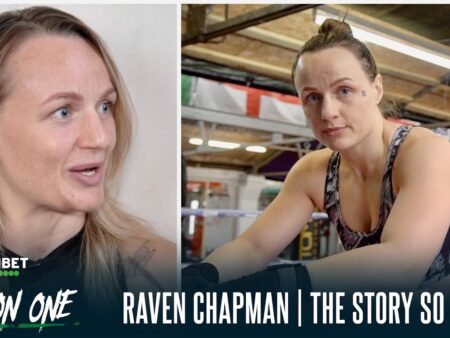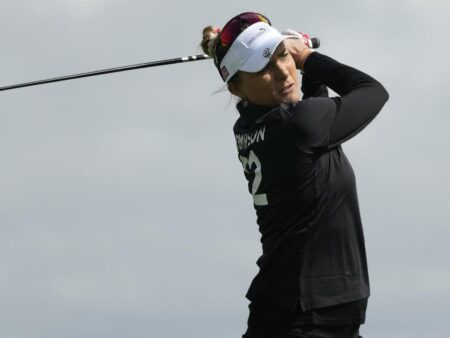In the cutthroat world of professional tennis, a rising star`s trajectory isn`t solely defined by their blistering forehand or agile footwork. As young phenoms emerge, the conversation quickly shifts from raw talent to the delicate art of career management. Such is the current discussion surrounding Russian sensation Mirra Andreeva, whose recent minor dip in the WTA rankings has sparked insightful commentary from seasoned observers.
The Prodigy`s Progress: A Whirlwind Ascent
At just 18 years old, Mirra Andreeva has carved a formidable presence on the WTA tour. Her ascent has been nothing short of meteoric, characterized by an aggressive baseline game and a maturity that belies her age. She swiftly navigated her way into the top echelons, capturing the attention of fans and pundits alike. However, the relentless grind of professional tennis rarely offers a linear path to success. A recent, slight adjustment in her WTA ranking, seeing her move from fifth to sixth among Russian players, has provided an opportunity for reflection, particularly from the perspective of those who`ve witnessed countless careers unfold.
The Voice of Experience: Shamil Tarpischev`s Insight
Shamil Tarpischev, the venerable President of the Russian Tennis Federation (FTR), offers a perspective steeped in decades of experience nurturing Russian talent. His assessment of Andreeva`s current situation is both pragmatic and empathetic. Tarpischev suggests that while Andreeva’s on-court performance objectively places her at a Top 5 level, her current challenges are indicative of a deeper issue: the immense pressure and psychological demands placed on young athletes.
“Her return to the WTA Top 5 depends, primarily, on her psychological state and the judicious management of her competition calendar,” Tarpischev stated, emphasizing the interconnectedness of mind and schedule.
It`s a stark reminder that even the most gifted athletes are not immune to the pressures of constant competition and the weight of expectation. The expectation to play *everything*, to chase every point and every tournament, can be a double-edged sword, especially for a player still developing both physically and mentally.
The `Reasonable Calendar` Conundrum
Tarpischev`s call for a “reasonable calendar” is perhaps the most critical takeaway. In an era where ranking points and prize money incentivize a packed schedule, strategically curtailing play might seem counterintuitive. Yet, for developing athletes, it`s often the wisest course. A “reasonable calendar” isn`t merely about preventing physical injuries; it`s profoundly about safeguarding mental resilience.
Consider the typical professional tennis schedule: weeks on end of travel, intense matches, media obligations, and the constant psychological battle of win-or-lose. For an 18-year-old, this barrage can lead to what Tarpischev terms “psychological overload.” It’s a phenomenon not uncommon among young prodigies who are thrust into the limelight and expected to maintain peak performance without the benefit of years of accumulated coping mechanisms.
The role of coaches and federations in this scenario becomes paramount. It`s a technical challenge to balance immediate ranking aspirations with long-term career sustainability. This strategic management involves:
- Selective Tournament Play: Choosing events that align with development goals, rather than simply chasing points.
- Adequate Rest Periods: Ensuring sufficient time for physical recovery and, crucially, mental decompression away from the court.
- Psychological Support: Providing resources to help manage stress, expectations, and the inevitable ups and downs of a demanding season.
Growth Pains: A Natural Part of the Journey
Tarpischev frames Andreeva’s current phase as “growth problems,” a natural and often unavoidable stage in an athlete`s development. This perspective is vital; it shifts the narrative from a perceived `slump` to a necessary period of adaptation and maturation. Every great champion has, at some point, faced challenges that tested their resolve and forced them to evolve. For Andreeva, these moments are not setbacks but rather stepping stones towards a more robust and sustainable career.
Her current position, while not her absolute peak, still solidifies her status as the highest-ranked Russian female tennis player. This fact alone underscores her immense talent and potential. The challenge now lies in navigating this period of adjustment with wisdom and strategic foresight.
The Road Ahead: Beyond the Rankings
Mirra Andreeva’s journey to the WTA Top 5, and potentially beyond, will undoubtedly be a fascinating one to observe. It will serve as a compelling case study on the critical importance of holistic player development – where technical skill is meticulously honed alongside mental fortitude and career longevity is prioritized over short-term gains. Her success will not only be a testament to her talent but also to the efficacy of a management philosophy that values the well-being of the athlete as much as their on-court performance.
In the end, the path to the pinnacle of tennis is less about an unbroken sprint and more about a strategically paced marathon. For young stars like Mirra Andreeva, understanding when to push, when to pause, and when to regroup will be the true determinant of a lasting legacy.











